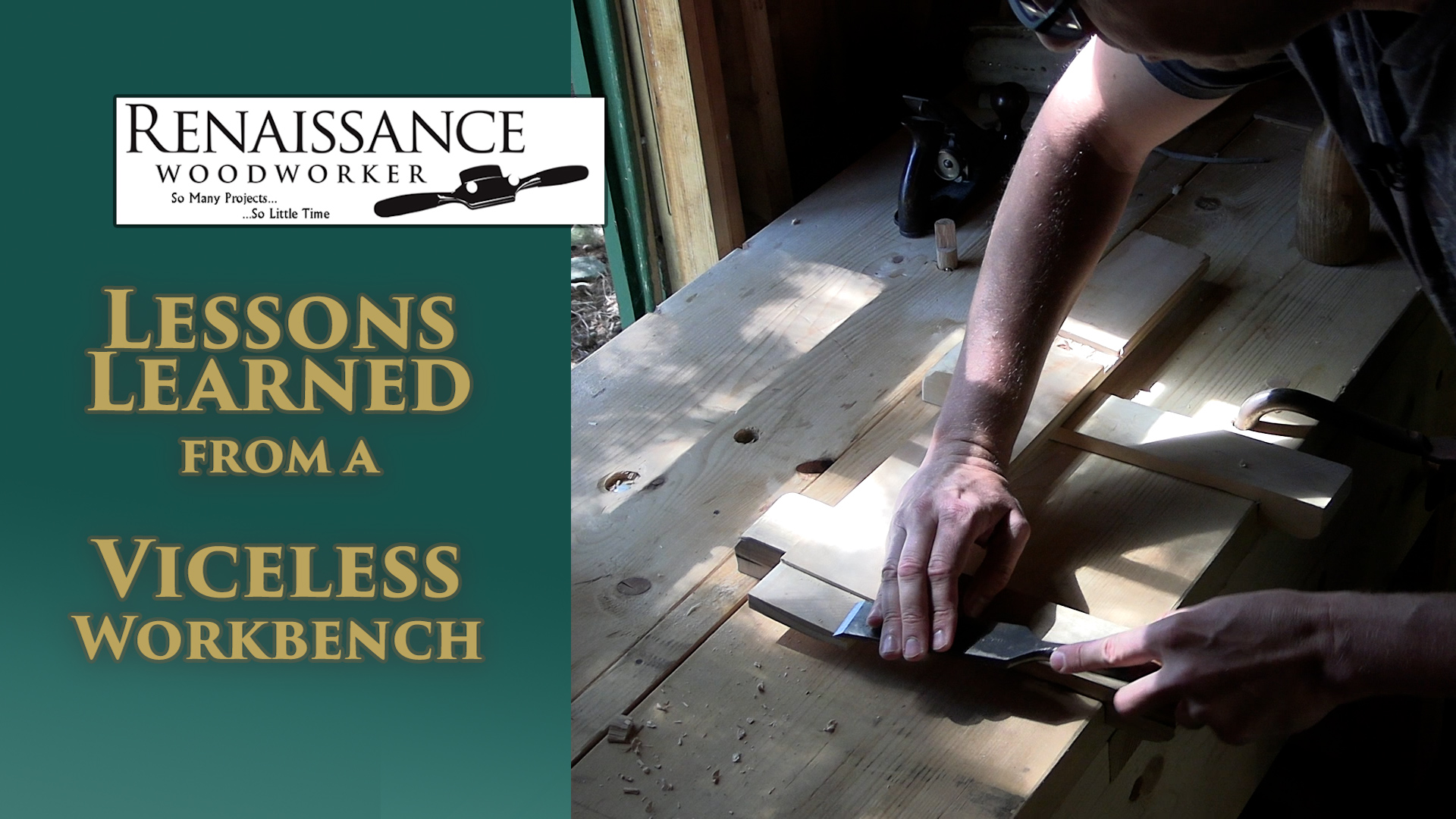Lessons Learned from a Viseless Workbench
Workbench Vises Get In the Way
I built this Nicholson style workbench a few years back as part of a beginning woodworker semester at The Hand Tool School I call Orientation. This viseless workbench is very simple to make the barrier to entry and time to build very low. Over the years of working on it having a viseless set up has actually improved my hand planing technique and taught me to pay attention always to the direction of force. Whether I am planing, sawing, or using a chisel it all comes down to understanding the force and using a passive stop is more effective and efficient than relying on a vise to squeeze the work piece. In practice the effective workbench relies on dog hole placement and some holdfasts.
Hand tool work holding doesn't have to be complex requiring expensive vises or even a bunch of shop made jigs. Leaving a board free to move around on the viseless workbench allows you to pick it up and examine your layout lines. After all woodworking is basically just working to a line so the more easily you can see them and check your progress, the better your results. When I work against a bench dog or planing stop the board "talks to me" every time I make a plane pass. Based on how the board moves I can tell if I need to adjust my planing technique or I can learn about the topography of the board. Working into a passive stop is really what led me to what I call "the spot planing method" that I use every day and has sped up my hand plane milling significantly. This is just the beginning and I have found that when I don't have a vise to rely on I actually work faster and understand more about the forces my tools are exerting on the boards.
Sponsor this Show
Questions and Topic ideas for today's show come from my Patreon sponsors. You could be one too and I'd love to answer your questions or demonstrate a technique.



